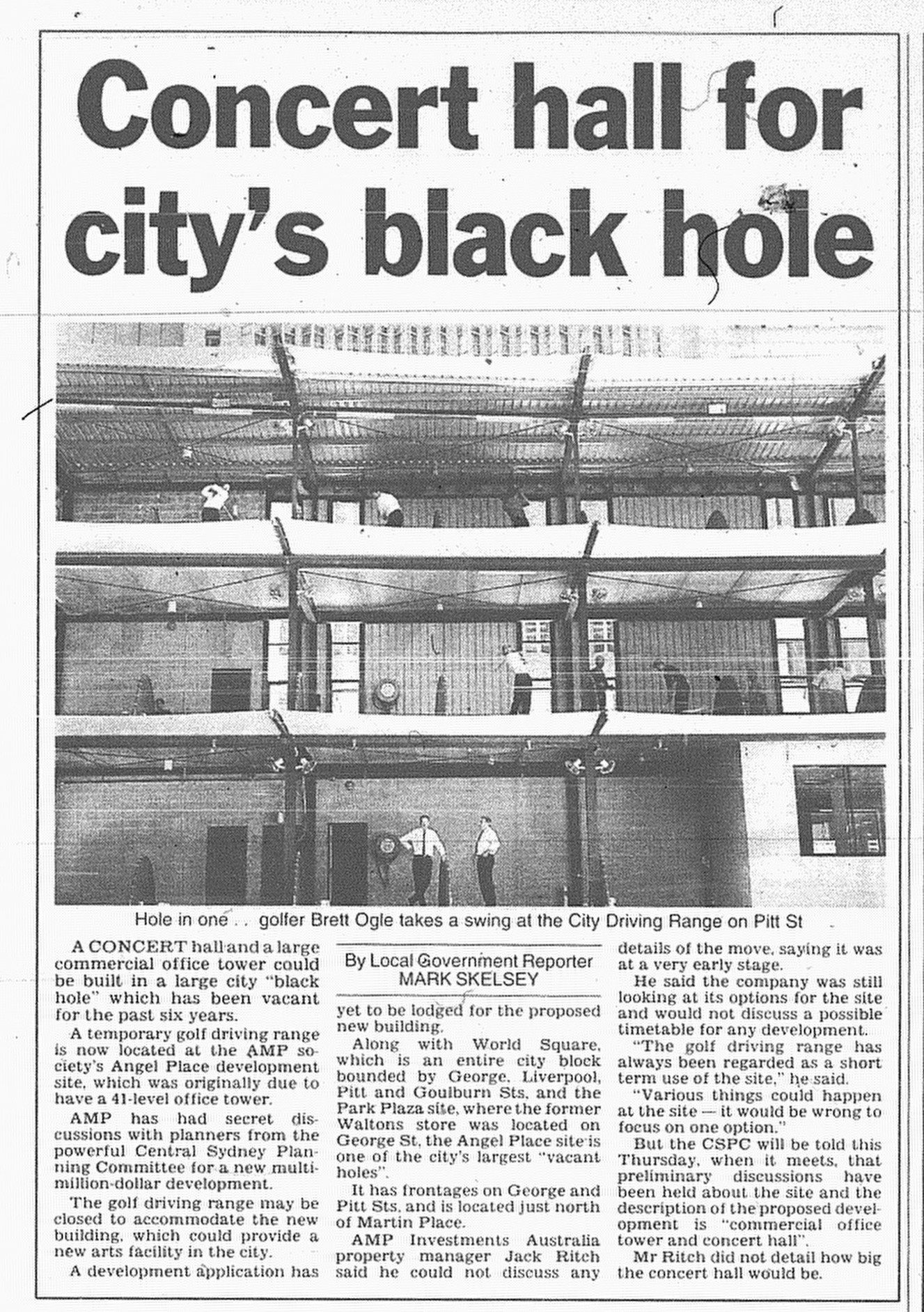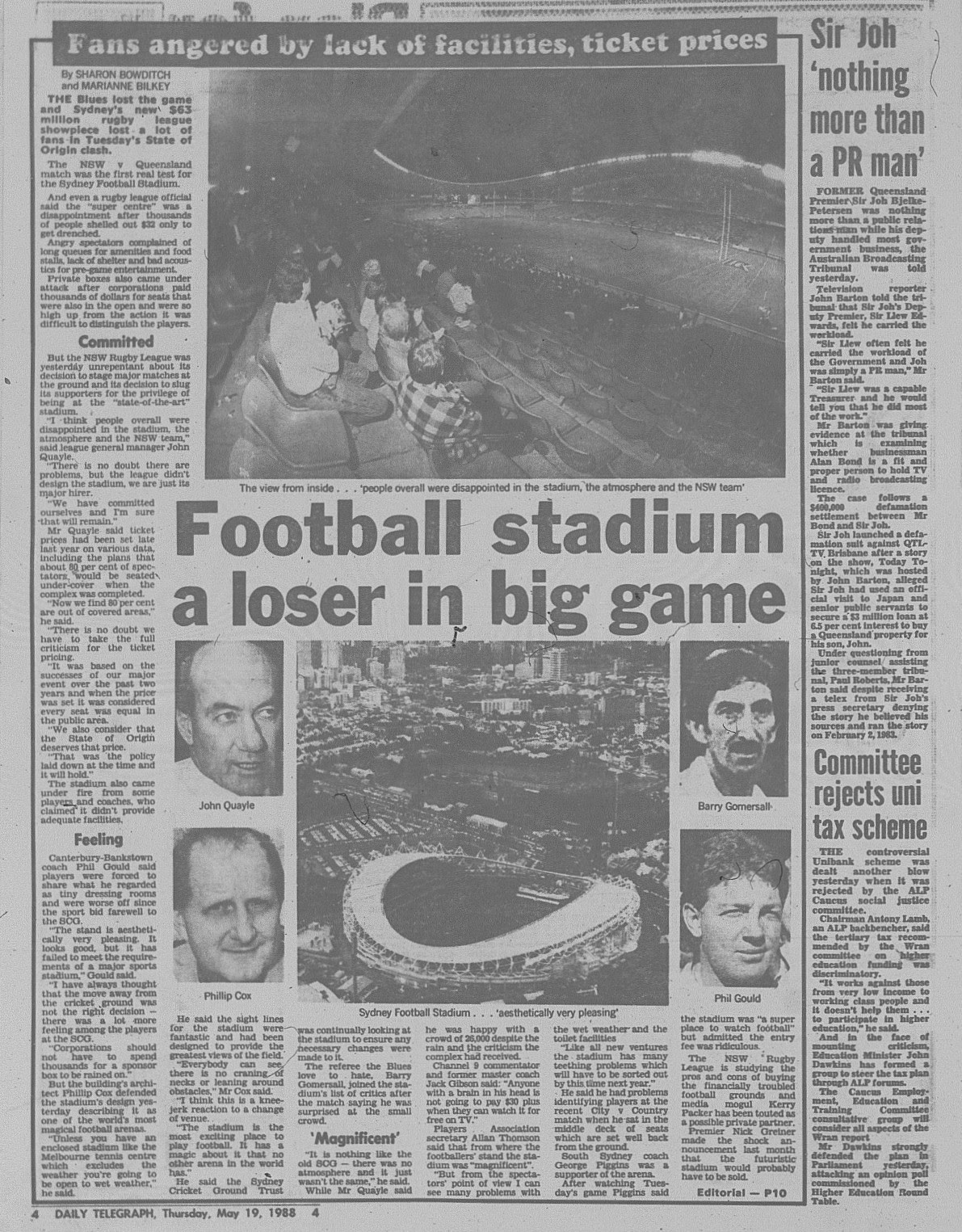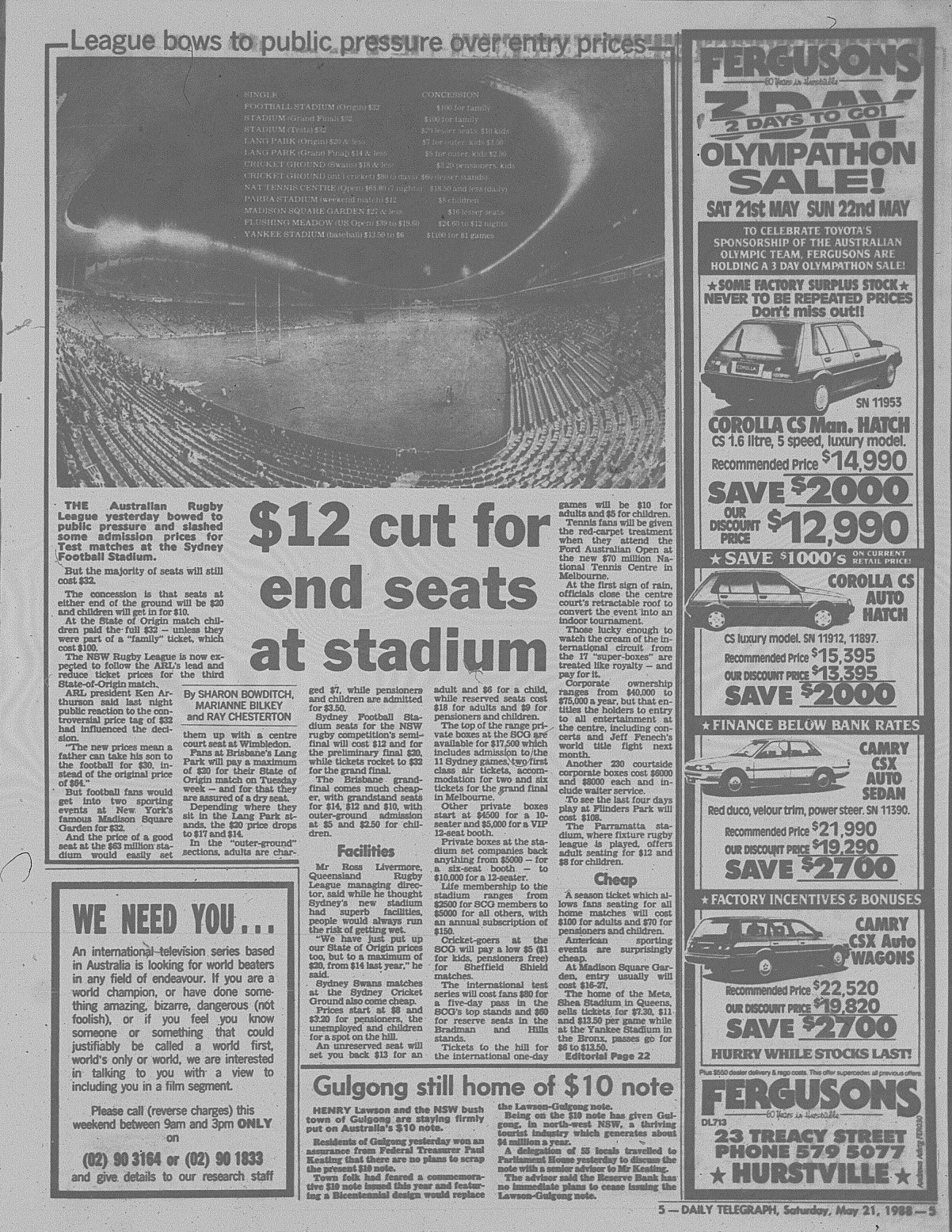This year marks 25 years since Stadium Australia (currently known as Accor Stadium) was completed and hosted its first events ahead of the Sydney 2000 Olympic Games.
In 1999, it was in its Olympic configuration, with a capacity of 110,000 and two temporary stands erected at the northern and southern ends of the stadium. Both stands were demolished after the Olympic Games in 2000 when the stadium was reconfigured into its current configuration of 83 500, and stadium roofing was extended over the northern and southern stands.
Some of the highlights from its first year included:
NRL Double Header - March 6 1999
To mark the start of the 1999 Rugby League season, the National Rugby League (NRL) decided to host a doubleheader at the stadium in round one, which attracted a world record attendance of 104 583.
In the first match, Newcastle defeated Manly 41-18, while Parramatta defeated St George-Illawarra 20-10. The night was also historic because it was the first match featuring the joint venture team St George Illawarra, formed after a merger of the St George Dragons and Illawarra Steelers at the end of the 1998 NRL season.



Bee Gees concert - March 27 1999
The Bee Gees claimed bragging rights for the first concert at the stadium, held just three weeks after the NRL Double Header. Over 60,000 attended the concert, the only Australian concert in its six-concert world tour.

Source: Scatena, D. 1999. "Bee Gees a sure thing in the poll that counts". The Daily Telegraph, March 27: 15.
However, the concert was overshadowed by the lack of train services to transport those travelling home to the Western Suburbs after the concert. As for the concert itself, there were issues with food and drink, but the sound was "great". Barry Gibb (Bee Gees) was "very impressed" with the stadium and the sound.

Source: McMillan, A. 1999. "So, where were the trains". The Daily Telegraph, March 29: 7.
Official Opening - June 12 1999

Stadium Australia. 1999. "The Official Opening of Stadium Australia" (Advertisement). The Daily Telegraph, June 11: 17.
I was fortunate to attend this event with my family on a cold june evening, sitting in the temporary southern grandstand. 88 000 people were treated to an entertainment spectacular before the feature event - an international football (soccer) match between the Socceroos and the Fifa All Stars. Australia prevailed 3-2.

NFL American Bowl - August 7 1999
Held on August 7, the American Bowl was hosted in Australia for the first time, featuring the Denver Broncos and San Diego Chargers. Watched by a crowd of just under 74,000 people, Denver won 20-17.
Bledisloe Cup - August 28 1999
On August 28, Stadium Australia hosted its first rugby union international test. Australia faced New Zealand in the Bledisloe Cup. It set a world record for the most attended rugby union game - 107 042, only to be broken the following year when the same nations played before a crowd of 109 874. Australia won 28-7 to retain the Bledisloe Cup.
Also, John Williamson led the crowd in singing Waltzing Matilda after the All Blacks performed the pre-game haka.
NRL Grand Final - September 26 1999

Held on September 26, 1999, St George Illawarra returned to the ground where they began their season and faced up to the Melbourne Storm, who were playing in their first grand final. Melbourne Storm defeated St George 20-18 after a penalty try was awarded to Craig Smith (Melbourne) late in the game and was converted by Matt Geyer.
The 1999 NRL Grand Final also had the highest attendance of a rugby league game in the world, beating the record set six months earlier in the same venue, with 107,999 in attendance.

Source: Stephens, T. 1999. "Lazarus and the miracle of the Melbourne stealers". The Sydney Morning Herald, September 27: 1.
The Sydney Morning Herald published a photospread in its Sporting Life section on September 27 1999.






















